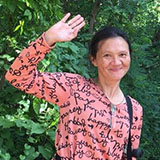There is not a great deal of phonetic or phonological variation among the Bisayan languages considered relevant to a discussion of the sounds of Bantayanon. My fieldwork has been guided and informed primarily by Zorc (1977) and the following: for Ilonggo (Wolfenden 1971) add Uy-Griño and Kaufmann, for Cebuano (Wolff 1972a, 1997; Pesirla 2012), and personal communication with Lobel, based on data collected during his extensive surveys of Philippine and North Bornean languages. All effort has been made to reconcile the assertions in this chapter with existant literature on Bantayanon and related languages, and, while the accuracy of these authors is not in dispute, where there are divergences, it is simply that I have striven to be slightly more precise in my descriptions.
In this post, I will present the consonantal and vocalic phones (phonemes, allophones, and non-native phones) of Bantayanon speech and speech patterns, not all of which are represented in the orthography of the language. The inventory of consonantal phones of Bantayanon can be divided into 3 categories: native phonemes, environmental allophones, and non-native phones. The vocalic phones can be grouped into native phonemes, including diphthongs, and non-native phones. Table 1 and Table 2 below chart each of these phones according to place and manner of articulation (for consonants) and tongue position (for vowels), respectively.
- The native phonemes are the sounds that can be considered indigenous to Bisayan languages and, by extension, to Bantayanon. These sounds 1) are contrastive and 2) can not be considered to have been adopted from non-Austronesian contact languages, typically Spanish or English. This is not to say that these sounds don’t exist in adopted words, however, as these words typically underwent either adaptation or accommodation when adopted.
- The environmental allophones are the variations of native phonemes that occur regularly in and only in their particular environments and diverge from their corresponding phonemes in their manner of articulation, place of articulation or voicing. In other words, these do not include allophones that can be described more precisely by the use of diacritics; these will be presented in the descriptions of the individual phonemes.
- The non-native phones are always found in adopted words and either 1) are used idiolectically in free variation with the native sounds or 2) occur in a small number of words that have been adopted without adaptation or accommodation, hence they have become phones of Bantayanon. In the case of the latter, this small group of words are the ones we have chosen generally not to respell.
- syum /ʃjum/ or /ʃum/ ‘small ant’
- tyu /čju/ or /ču/ ‘three’
- dyaga /ǰága/ or /ǰjága/ ‘young girl’.
TO BE CONTINUED...



